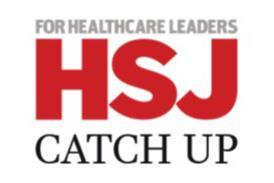The only way to close the NHS’s gap in funding is for the parties to close their gap in leadership. These decisions may increase pain now, but they will prevent a much greater hardship in the future, argues Harry Quilter-Pinner
Whichever political party or parties take office after the general election, Simon Stevens’ £8bn funding gap - the extra investment needed in the NHS, after efficiency savings, to maintain the quality and quantity of services provided - will likely be filled.

Indeed, the Lib Dems and the Conservatives have both promised as much, and while Labour has so far pledged only £2.5bn in extra funding, this is entirely down to their need to appear fiscally prudent pre-election.
Post-election it is implausible that a Labour led government will fail to put up the cash needed to protect the NHS.
This is good news. The last five years have seen the lowest rate of growth in health spending since 1955 at a mere 0.6 per cent in real terms, with spending per person falling over the Parliament as a whole.
‘The last five years have seen the lowest rate of growth in health spending since 1955’
As a result, the service is in a bad way. Accident and emergency waiting times are higher than they have been in over a decade. And in 2014-15 the NHS as a whole will record a £626m deficit despite NHS England and the Treasury pumping in around £900m of emergency funding.
However, if the political parties think that delivering the extra £8bn that Mr Stevens has asked for puts them (and the NHS) back on solid ground, they should think again.
- Poll: Tory cash pledge fails to cut through
- How popular are the parties’ flagship policies?
- The latest election news and analysis
Closing the gap takes efficiency
The funding gap will only total £8bn if the service makes £22bn worth of efficiency savings over the same period. This requires an increase in productivity across the NHS to 2-3 per cent from its historical trend of 1-1.5 per cent.
Achieving this increase is highly improbable - indeed, it would be unprecedented.
‘Achieving the productivity increase would be unprecedented’
Although the NHS has experienced an increase in productivity over the last five years - hitting the 2 per cent a year mark in the first two years of the coalition government - this increase is not enough to reach the target set by Mr Stevens and has not been sustained over the whole Parliament.
Worse still, this under par productivity performance was primarily delivered through pay restraint and reductions in the tariff paid by NHS England to service providers, neither of which is sustainable in the longer term.
By contrast efficiency savings driven by technological innovation and demand management - the only sustainable forms of productivity growth - were minimal.
This suggests that a much more realistic assumption going forward is that the NHS maintains its recent productivity growth of about 1.5 per cent a year.
If this were to occur the Health Foundation calculates that the funding gap would in fact be much larger than £8bn, totalling £16bn by end of the next Parliament and ballooning to between £34bn and £65bn by 2030.
No holds barred
This all leads to a clear conclusion. In the long term politicians will have to have a no-holds-barred (and uncharacteristically honest) conversation with the public about whether they prefer tax increases in order to maintain the service provided by the NHS; reductions in the quality or quantity of the services provided; or a move towards an insurance or means tested model of health provision.
‘Politicians must resist the temptation to raid money earmarked for transformation and prioritise reform’
On this the Institute for Public Policy Research has been outspoken in its preference for an NHS tax.
Furthermore, polling suggests that the public agrees with us. For example, the Health Foundation recently found that 59 per cent of people would be in favour of an increase in taxes rather than cuts to the service or means testing.
Meanwhile, in the shorter term politicians can narrow the potential funding gap - and thus the extent of extra taxes levied - by ruthlessly prioritising the reform element of the NHS Five Year Forward View.
Much needed improvements in productivity can be driven by:
- getting serious about prevention;
- moving care away from the acute sector and into the community, and
- driving forward with the integration agenda at pace.
But to do this the NHS needs pump prime investment now in order to fund the double running of some services. Here, IPPR is in favour of the creation of the transformation fund, along the lines set out by the King’s Fund and the Nuffield Trust, to serve this exact purpose.
Furthermore, politicians must resist the temptation to raid money earmarked for transformation and prioritise reform even if it comes as the expense of short term performance targets such as waiting times (something which could be guaranteed if the fund was passed over to an independent body to manage) or requires unpopular decisions such as hospital closures.
Put more simply, the only way to close the NHS’s gap in funding is for the political parties and their leaders to close their gap in leadership. These decisions may increase pain now, but they will prevent a much greater hardship in the future.
Harry Quilter-Pinner is a researcher for the Institute for Public Policy Research



























No comments yet